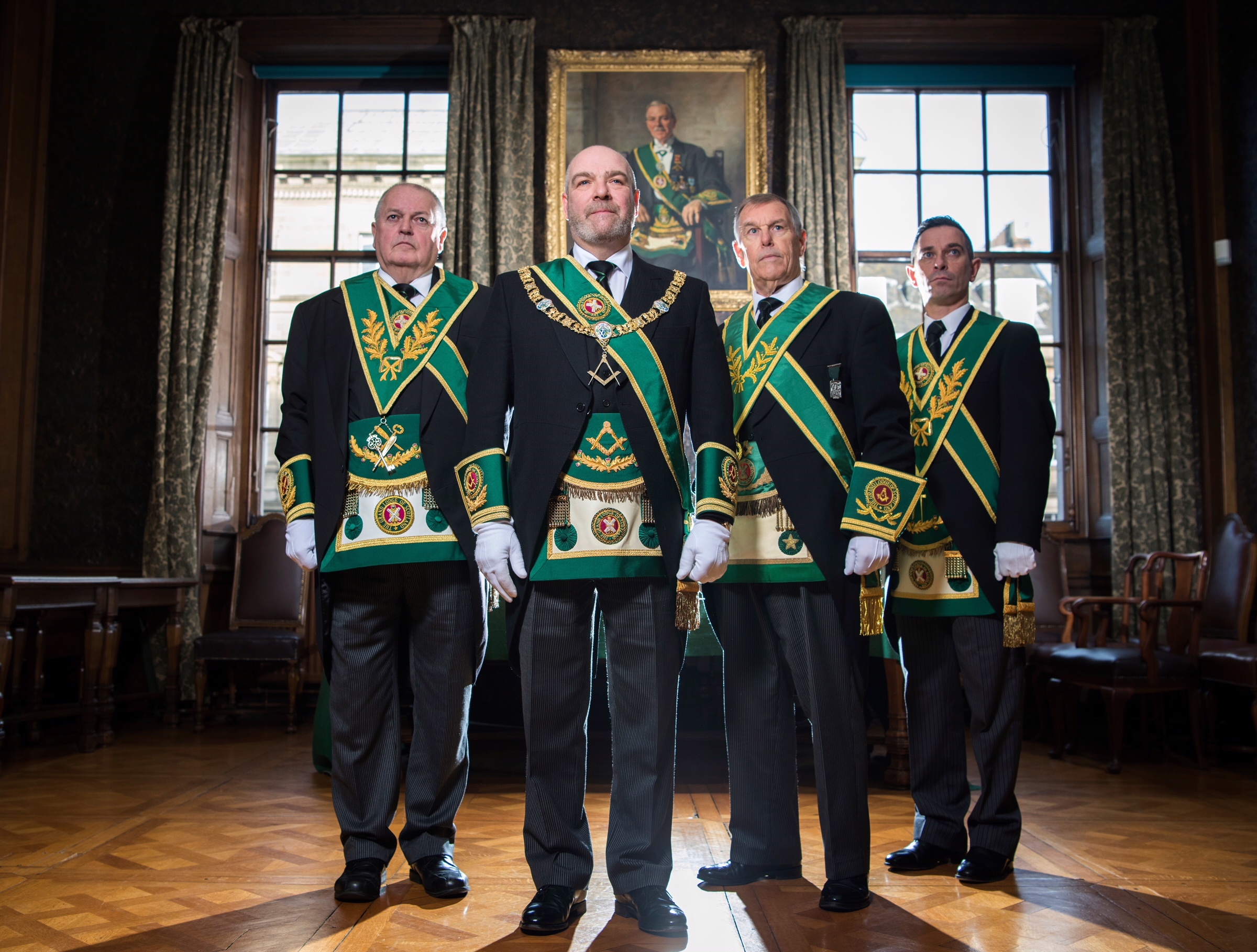
ONE of Scotland’s most senior Masons says the organisation will need the help of women to secure its future.
But, despite insisting a female focus is crucial, Depute Grand Master Ramsay McGhee says the Masons must stay men-only.
Membership has slumped over decades and a fresh approach is required, according to the former senior police officer.
“I think we need to make this an organisation where the whole family can participate,” said Mr McGhee, 70.
Speaking ahead of a BBC Scotland documentary being screened tomorrow, he said: “We need to change and involve wives and families far more than we have in the past.
“It’s abundantly clear that successful lodges in Scotland and around the world are ones that have them as an integral part.
“We have to start moving in that direction.
“But I honestly believe there are times that men want to be with men and women want to be with women.
“My wife is very heavily involved in the Scottish Women’s Institute and in the name of equality, I don’t see why we shouldn’t be able to meet just as menfolk and womenfolk.
“Lodges have a lot of talks and other activities that the women could attend while the men have their own meeting and then we can all join together.
“I’m very keen to encourage that.”
Secrets Of The Masons, narrated by Bill Paterson, gives a rare glimpse into the normally closed world of “The Craft”.
For the first time, Freemasons allowed cameras into a number of their Scottish lodges to shed light on the organisation, although the camera crew were pointedly asked to leave as ceremonies took place.
It is an organisation relatively few know much about, with some seeing it as a club characterised by funny handshakes and raised trouser legs.
To others, it’s a secret group with genuine power which still exerts questionable influence in many areas of society.
Edinburgh is still the iconic home of Freemasonry and the Grand Master Mason presides over 1000 lodges and 100,000 Scottish Freemasons across the world.
The roots in Scotland go back to the time of James VI and Bob Cooper, curator at the George Street Grand Lodge, has ledgers dating back centuries.
The oldest is from January 9, 1598, and the treasure trove of archive material there and at other lodges shows the Masonic influence on major historical figures. Robert Burns, whose local lodge was at Tarbolton, in Ayrshire, had his masonic connections to thank for promoting his literary career.
Two-thirds of the copies of his famous Kilmarnock edition of poems were bought by Freemasons when he feared he might have to leave the country to seek a living.
And the wheels of his career were further oiled by an introduction to his Edinburgh publisher.
The programme states that engineer James Watt, whose steam engine helped power the Industrial Revolution, would similarly have seen his membership of a Glasgow Lodge as a smart career move.
The influence spread throughout the world. It was to Masonic Scots that one of America’s Founding Fathers, first President George Washington, turned to learn vital lessons in setting up the new Republic.

By the 1950s, 40% of all US Presidents, 13 out of 33, were Freemasons.
Suspicion and persecution have provided a sobering counterbalance to the influence and achievement, though, with 80,000 Freemasons sent to the gas chambers in Nazi Germany.
One oft-repeated suspicion is that the Masonic membership has had a pernicious effect on the police.
When Ramsay McGhee joined the police in the 1970s, half of the constables he served with on the Black Isle were Masons.
“In my 30 years, I was only approached once by someone seeking to use the Masons,” said Mr McGhee, who retired in 2003 as a Chief Superintendent with Northern Constabulary.
“It was when I was dealing with a minor traffic offence and this guy started using the ‘brother’ bit. It just wasn’t going to happen.
“It was not something I saw in the police force here. And when I was seconded to a force in England for 18 months I was in touch with guys from various lodges.
“There was no indication of it being something that went on either.”
At its peak, a tenth of the eligible population in Scotland were Masons, the highest anywhere in the world.
But numbers have declined and Lodges have closed.
In a bid to reverse the trend, moves have been made to recruit younger members.
This includes the re-designation of one in Edinburgh as a Student Lodge.
Along with making wives, partners and families more of a part of things, there’s a feeling among the hierarchy that the future may be brighter than some might think.
“My biggest frustration is that some of where we are has been brought on by ourselves,” said Mr McGhee.
“In the past there has been a tendency not to speak about Masonic matters unless you are in the company of Masons. So the lack of knowledge is our own fault.
“There has been a slight increase in numbers. And we are getting younger people.
But others outside of the organisation aren’t as sure of a rosy future, or indeed that it can play a role of influence anything like it did in the past.
“It stops being somewhere we were thinking about advancing and starts being something that’s looking for a mythical past to justify itself,” said Steve Murdoch, Professor of History at the University of St Andrews.
“The validity of Masonry in the 21st Century is something I’ll leave to the Freemasons to discuss. But for me it’s something that lost its way in the 18th Century and lost its validity in the 18th Century.”
Secrets Of The Masons, BBC2, 9pm, tomorrow

Enjoy the convenience of having The Sunday Post delivered as a digital ePaper straight to your smartphone, tablet or computer.
Subscribe for only £5.49 a month and enjoy all the benefits of the printed paper as a digital replica.
Subscribe